Personal Timekeeper and Circle of Moment Measurement
21 Jul 2015, by Taeyoon ChoiFor the past few months, E Roon and I worked on The Personal Timekeeper v.1, an electronic device that gives form to the user’s personal sense of time. We designed and fabricated a custom hardware and software system for a participatory performance and workshop at Los Angeles County Museum of Art (LACMA) held on 7/18~19 2015 titled Circle of Moment Measurement.
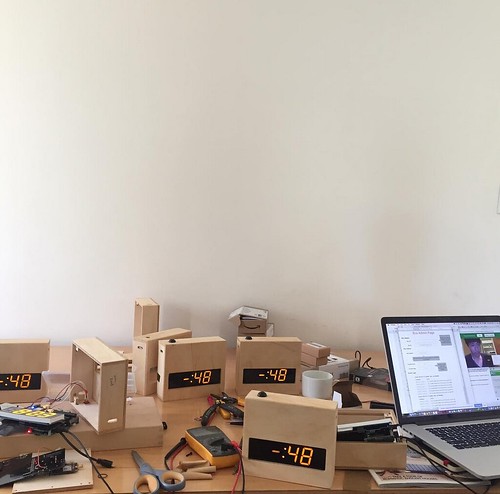
Similar to our previous workshops and time based experiments such as Timekeeper Invention Club, we hoped to create a situation for uncommon discussions of time by facilitating a temporary gathering of individuals with different perspectives about human agency on time. The idea was to create a roundtable among ‘time travellers’, a cliche term in popular culture which we appropriated to mean people literally travelling in different speeds and points in time. We thought the best way to realize this would be to create an experience for them to visualize differences in their perception of time, give them agency to control time through tactile control then bring them together to discuss their differences in their perception of time. This exercise of measuring ‘moments’, an abstract term to give form to the semantics of time, would culminate in ‘circle’ like a close-knit tribal community.
##Personal Timekeeper v.1
The Personal Timekeeper is designed to enable experiencing time differently, more subjectively and personally. Technically, it’s a wooden box with a button, numeric display, power supply and a custom board connecting the components to a small computer (Raspberry Pi) communicating to the Internet via cellular signal.

The Personal Timekeeper is initialized by the user by pressing down the button for how long they think a minute feels like. After releasing the button, the Personal Timekeeper proceeds ‘keeping’ time on the speed based on your perceptual minute — If your perceptual minute was 30 seconds, your 1 minute is going to be very fast (30 seconds in Universal Time). Your time is constantly broadcasted on the Circle for Moment Measurement website under a custom URL.
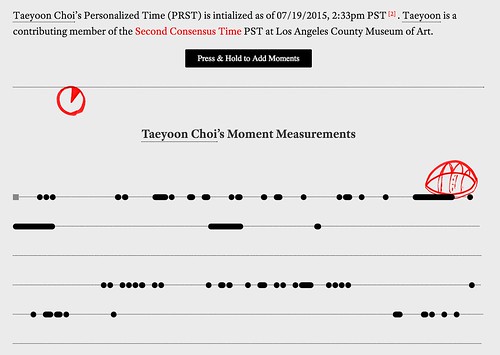
This image shows that Kyle McDonald initialized his time on 2:46 pm on 7/18/2015 Pacific Time, he’s currently living in 7:27 pm on 7/20/2015 but as it’s actually 8:58 pm on 7/21/2015 Pacific Time. We can understand that his personal time is slower than the Standard Time because his initialization was longer than 60 seconds.
The second feature is holding down the button to mark a moment. The moment is defined by whatever period of time that’s significant to you. Each moment can also hold different meanings. We intended to avoid any meta data about the user (such as heart beat, location) or extra media such as photo or video about the moment. The moment is just time in its elements. The information about the moments are saved in the server and visualized as dots and lines on the website.

In this picture, you can see the times and durations when I pressed the button over the course of few days. These are the markings of moment in time.
You can also trigger prompts (instructions and suggestions) to spend your time. When the Personal Timekeepers are triggered by a quick tap on the button, a random choice of prompts including the following are assigned.
- Change something small in the space that you are in right now, like moving a pebble on the curb. Think about everything that might have changed due to your action.
- Watch other museum visitors walk by and observe for five minutes.
- Try to fall in love with someone as fast as you can.
- Ask a museum visitor “What time is it, where you came from?”
The participants are asked not to verbally engage with other participants unless both parties agree to speak by circling around each other. The museum guards were informed about the performance and there were signs around the museum about it to inform the visitors.
##Circle of Moment Measurement
The Circle of Moment Measurement workshop was organized in the following steps.
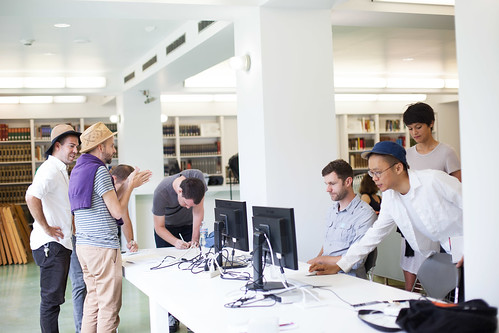
- 1pm Participants come in. Registration on moment.isopt.info to make their account.
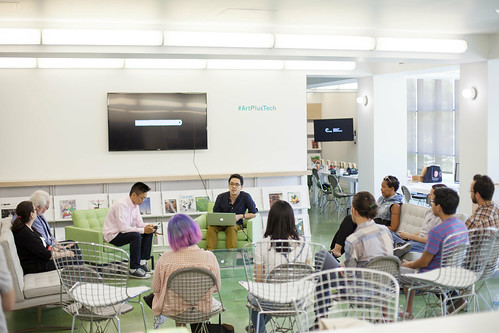
- 1:15 Begin presentation for the project.
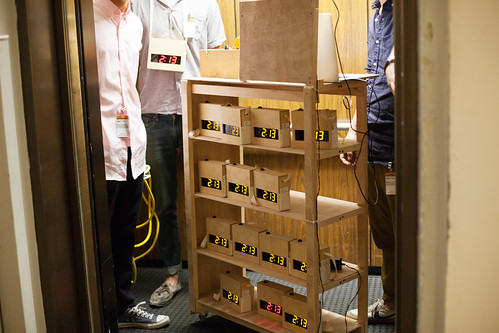
- 2:15 Participants sign in at the Museum entrance.
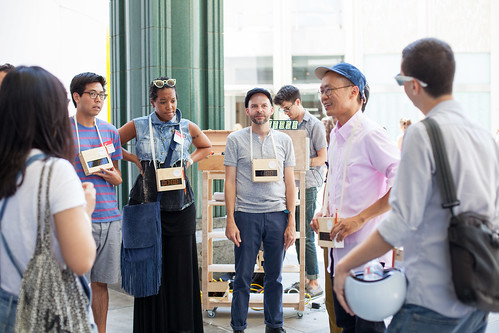
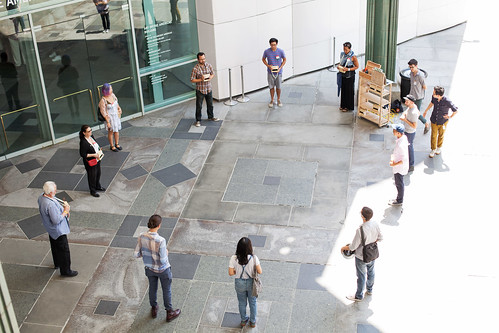
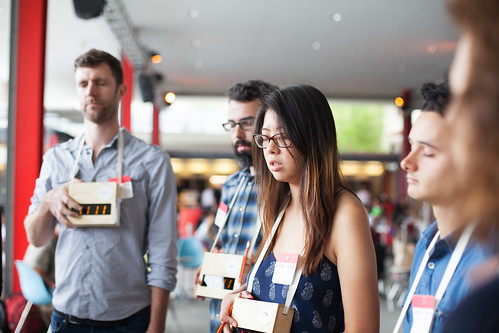
- 2:30 Participants initialize their moments with the Personal Timekeepers at the BP Grand Entrance in the first day and LA Times Court in the second day.
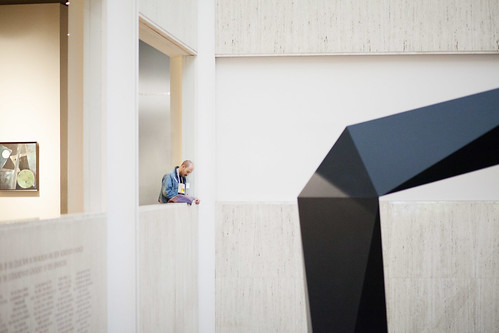
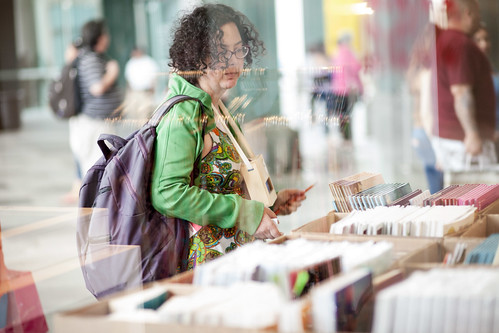
-
2:30~3:30 Performance. Participants explored the spaces and time in the museum.
-
3:30 PRST (Personalized time) Participants meet back in the Lab. Since their times are different, they arrive in different times.
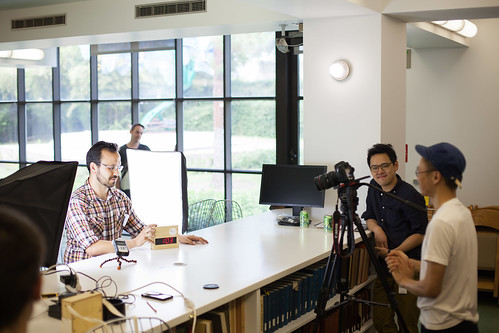
- ~4:00 Participants recorded short videos about their moments.
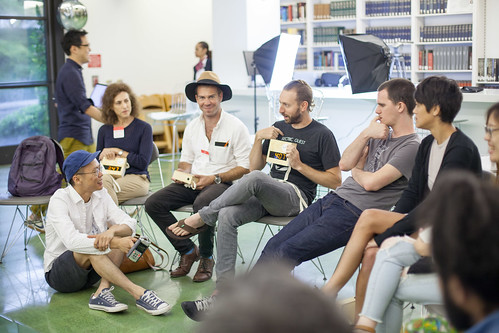
- 4~5pm Roundtable discussion about Consensus Time.
In the final stage of the workshop, the participants joined a roundtable about their Consensus Time. In preparation for the workshop, we designed an online system to calculate and display the consensus time. We hoped to arrive at some kind of consensus among the participants about the shared time and broadcast the consensus time on the dedicated page as well as one of the Personal Timekeepers to be displayed in LACMA.
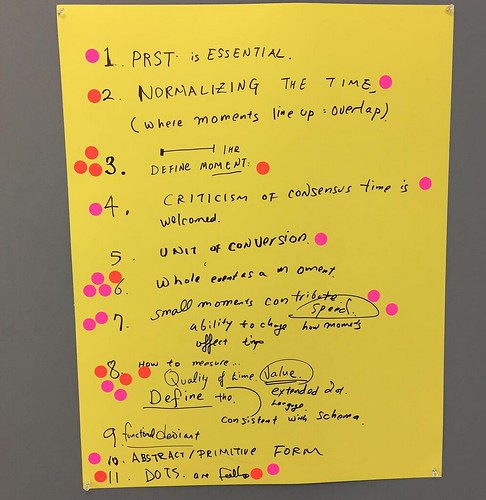
The conversation renewed our interest about the multiplicities of times. After about an hour of conversation we didn’t get to reach the consensus. Maybe that’s rather revealing about the nature of consensus. However, on the process we agreed to live in this moment and to reflect that we have already made a consensus to be present here and now. It may have been an unachievable question to begin with. After all, similarly to the ‘moment’, an intentionally obscure term that may mean anything, ‘consensus’ was intentionally designed to provoke conversation. On the first day, we agreed that we can’t reach a consensus and the on the second day we created a list on guidance for the consensus which every participant contributed one statement. Everyone got three stickers to pick their choice, an exercise in primitive democracies of time. We returned to our initial curiosity. If everyone’s time is different, can we create a bottom up approach to determining time, and what would be the democracy of time? We still don’t have answers to it, we just have few more leads since the time we started our project.
To watch the longer edit, check out this version and pictures. Also check out an article by Amy Heibel on LACMA’s blog Unframed.
Special thanks to Joel Ferree and Amy Heibel of LACMA. Jon Moeller, Charlotte Stiltes, Wonyoung So, Kurt Keppeler for video and Drunkin for photographs. Also big thanks to all of the workshop participants.






